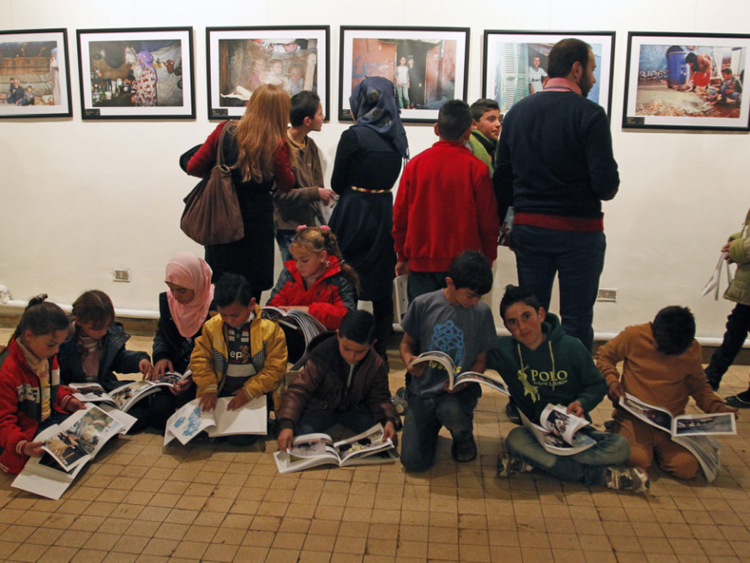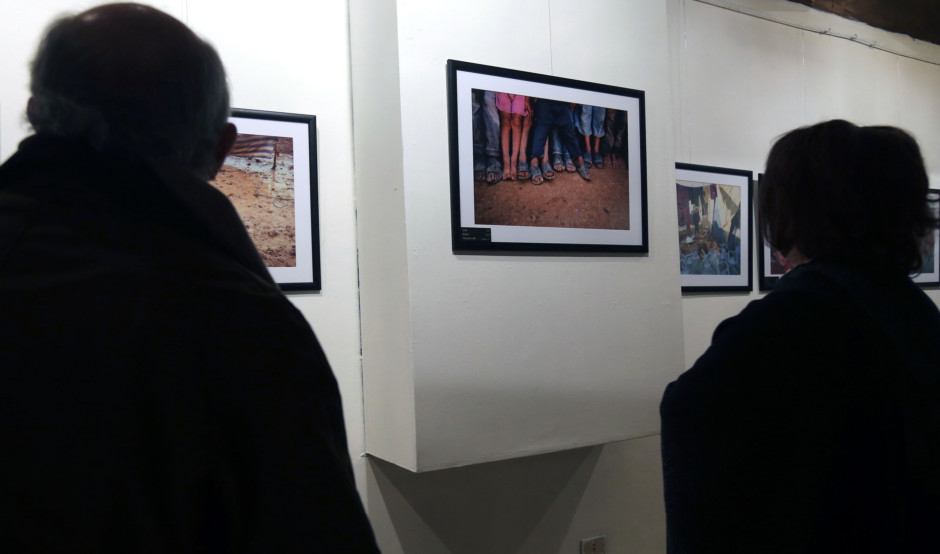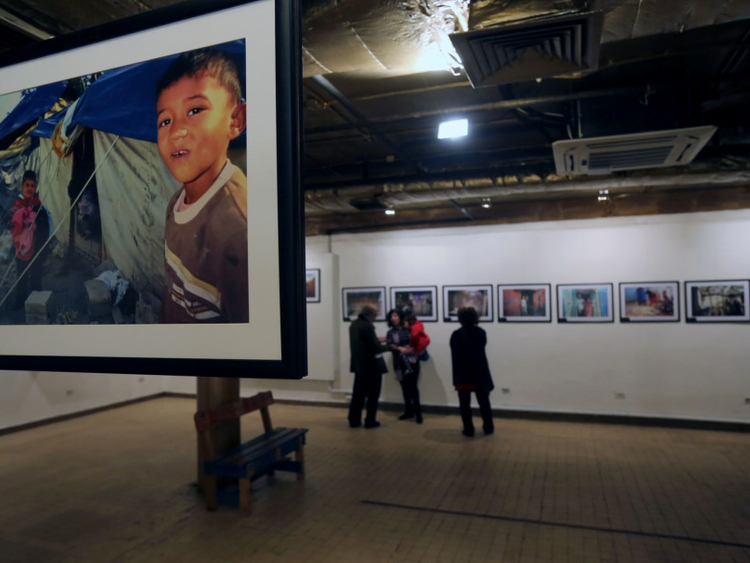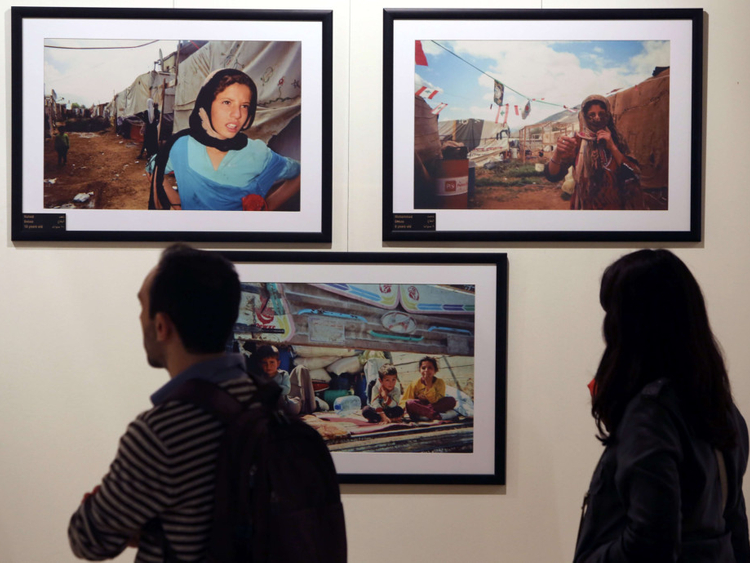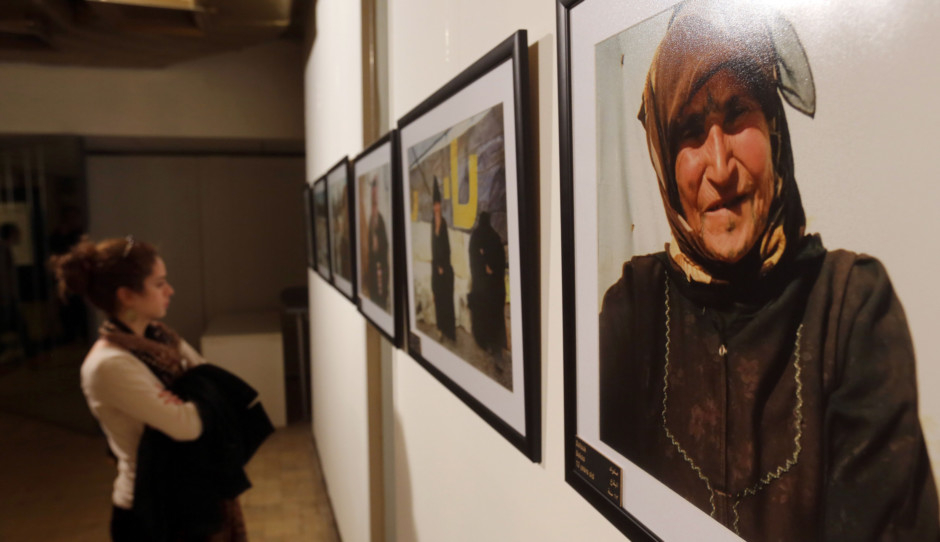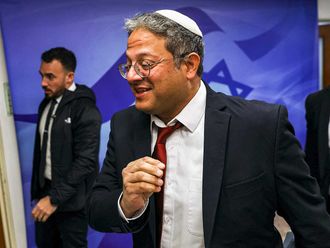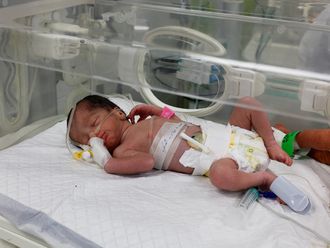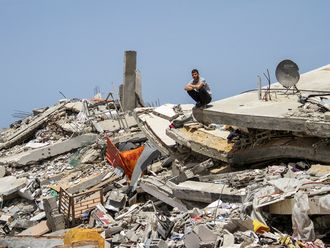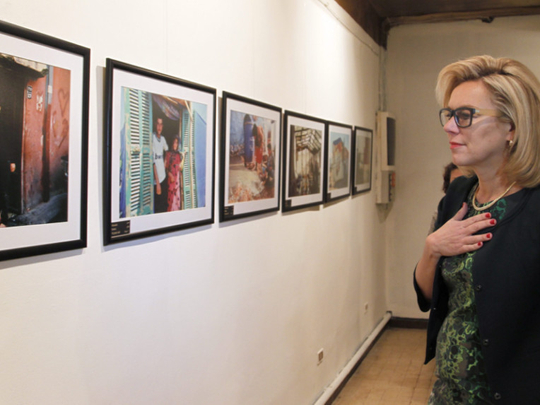
Beirut: The photos on display at a Beirut theatre show Syrian refugees chopping wood, getting married, and playing in a Lebanese field. They are the work not of professionals, but Syrian refugee children.
The exhibition is the culmination of a year-long project that gave cameras to 500 Syrian refugee children in Lebanon, allowing them to document lives turned upside down by their country’s nearly four-year conflict.
In many cases the children turned their cameras on each other, showing images of warming hands over a fire, peeking through a hole in a tattered tent and standing barefoot in a muddy field.
The project is a collaboration between Lebanese foundation Zakira and the UN children’s agency UNICEF, and builds on a similar project done with Palestinian refugee children in Lebanon.
There are more than 1.1 million Syrian refugees in Lebanon, many living in dire conditions in makeshift camps. About half of them are children.
“Syrian children living in the camps have suffered war and displacement. They need any kind of help that they can get,” said veteran Lebanese photographer Ramzi Haidar.
“With a camera, the children can be happy,” Haidar, who directed the project and taught the children how to use the disposable cameras, told AFP.
At the Thursday night opening of the exhibition, entitled “Lahza (Moment) 2”, 14-year-old photographer and refugee Abdul Salam beamed proudly.
His photo shows a group of refugee children huddled together to pose for the camera, smiling despite the harsh conditions in Lebanon’s claustrophobic and underequipped camps.
“When I grow up, I want to be a photojournalist,” Abdul Salam told AFP.
“It’s hard to have fun in the camp. When we lived in Syria, we lived in houses. Here, we live in tents. This project gave me the chance to take pictures of children smiling and having fun.”
Held at Beirut’s prestigious Al Madina Theatre, the opening of the exhibition brought together refugee children and their parents, Lebanese and Syrian civil society activists, UN officials and photography fans.
The project, implemented in 80 informal camps in Lebanon, was also documented in a film that included interviews with child photographers and footage of their living conditions.
One girl described missing her father, who was shot dead in Syria.
“He used to bring us all kinds of toys. Now, we have no toys.”
UNICEF’s Soha Boustani said the project gave its participants “a window of hope, and allows them to remember what was best and worst about their lives”.
“What many children told me,” she said, “is that one day they will look back at these photos and remember the days when they were living like this”.
“The photos are a museum of their memories in the settlements (camps).”


